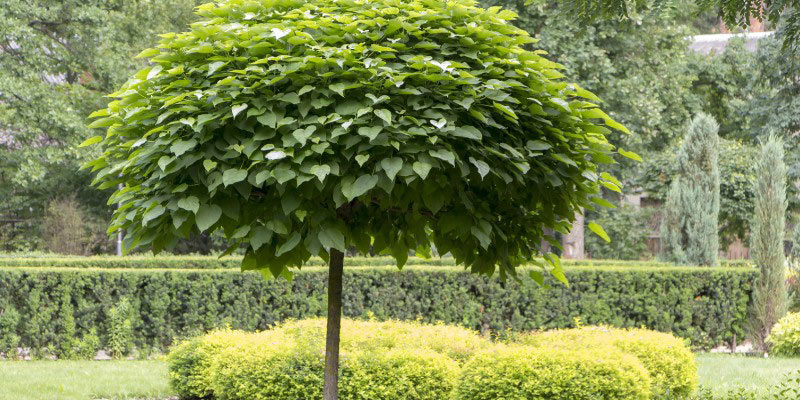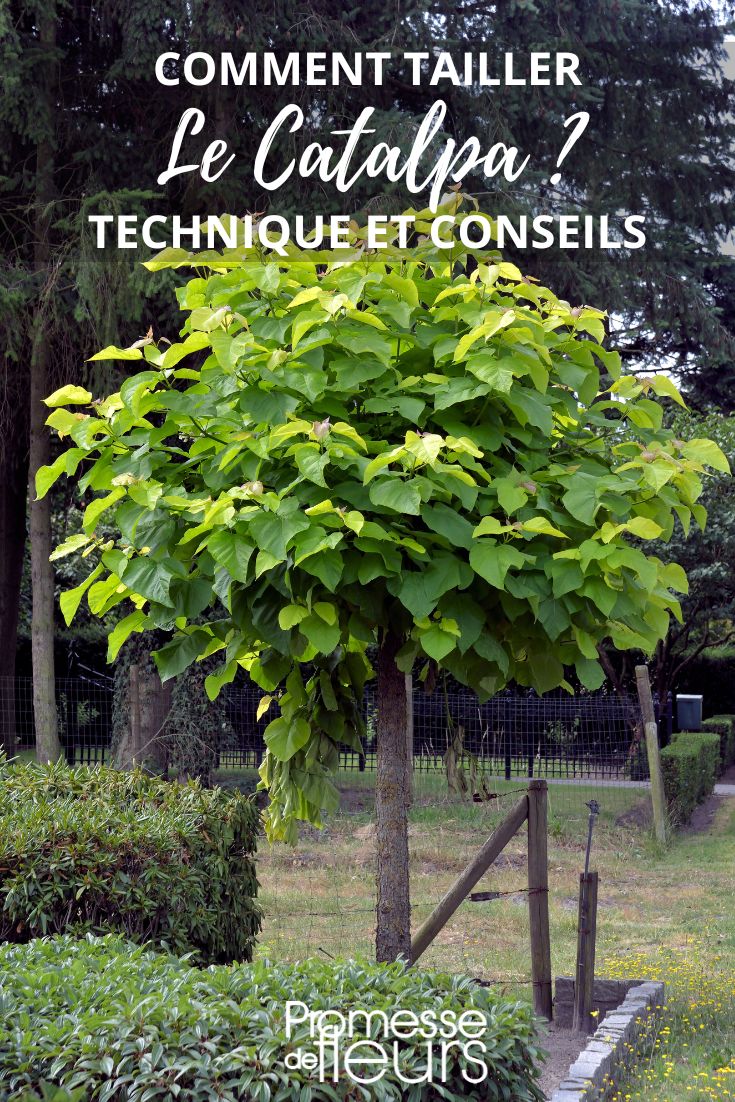Catalpa is a very handsome shade tree, valued for its spectacular white summer flowering, its large deciduous heart-shaped leaves, which provide welcome shelter from summer sun, and its long pod-shaped fruits, hence the nickname "bean tree". Fast-growing, it is a fairly imposing tree reaching 8 to 15 m in height with a crown 10 to 15 m wide. Very hardy down to -30 °C, it will establish in all medium to large gardens, sheltered from strong winds it dislikes, because its wood is brittle. Also very easy to to grow, it adapts to all soils that remain fresh, fairly deep and well drained and prefers sunny or semi-shaded aspects. Pruning Catalpa is not obligatory, but it helps maintain a pleasing form to the bush, a dense vegetation and to contain growth to suit your space. Let’s look at the right steps to keep a handsome tree with thick shade!
Why pruning Catalpa?
Although Catalpa does not really need pruning, it allows control of its size and very spreading habit, which is particularly important in small spaces and helps preserve a harmonious, rounded and balanced habit. It also promotes abundant flowering by removing old branches that no longer produce flowers. Finally, it helps sanitise the bush by removing diseased, dead, damaged or crossing branches, thus reducing risk of disease and pests and ensuring healthy growth of the tree. This pruning is also useful to clear branches in the centre.

When pruning Catalpa?
Ideal time to prune Catalpa is late winter or early spring, before leaf emergence, when there is no frost. Avoid pruning during active growth period, in summer or autumn, as this can stress tree and reduce vigour. Except for dwarf species such as Catalpa Ball (Catalpa bignonioides ‘Nana’), Catalpas benefit from severe pruning every 2 or 3 years to remain dense.
How to prune Catalpa ?
Pruning mainly consists of removing dead or diseased wood or shoots that cross. You can also shorten low branches that obstruct passage.
- Start by identifying dead, damaged branches or those growing into the crown.
- Use a pruning shear or a pruning saw that are well sharpened and disinfected to avoid spread of disease. Make clean cuts, just above a bud facing outwards, to encourage new growth in the desired direction.
- Remove dead wood to promote good circulation of air and light inside the tree by taking out some inner branches. This reduces density of the branches and risk of disease.
- If necessary, lightly prune outer branches to maintain desired shape of the tree, taking care not to remove more than one third of total foliar mass in a single growing season.
Good to know: if space is limited, Catalpa tolerates cutting back to ground level very well, which is a severe pruning. This consists of drastically cutting your tree to less than 40 centimetres above ground. This coppicing will then induce strong regrowth of 3–4 m in one year, producing leaves larger than naturally.

Required equipment
- Pruning shear
- Pruning saw or branch cutter for thicker, hard-to-reach branches.
Ensure use of pruning tools that are well sharpened and disinfected with alcohol to avoid spread of disease between plants.
To go further
- Discover our Catalpa varieties
































Comments